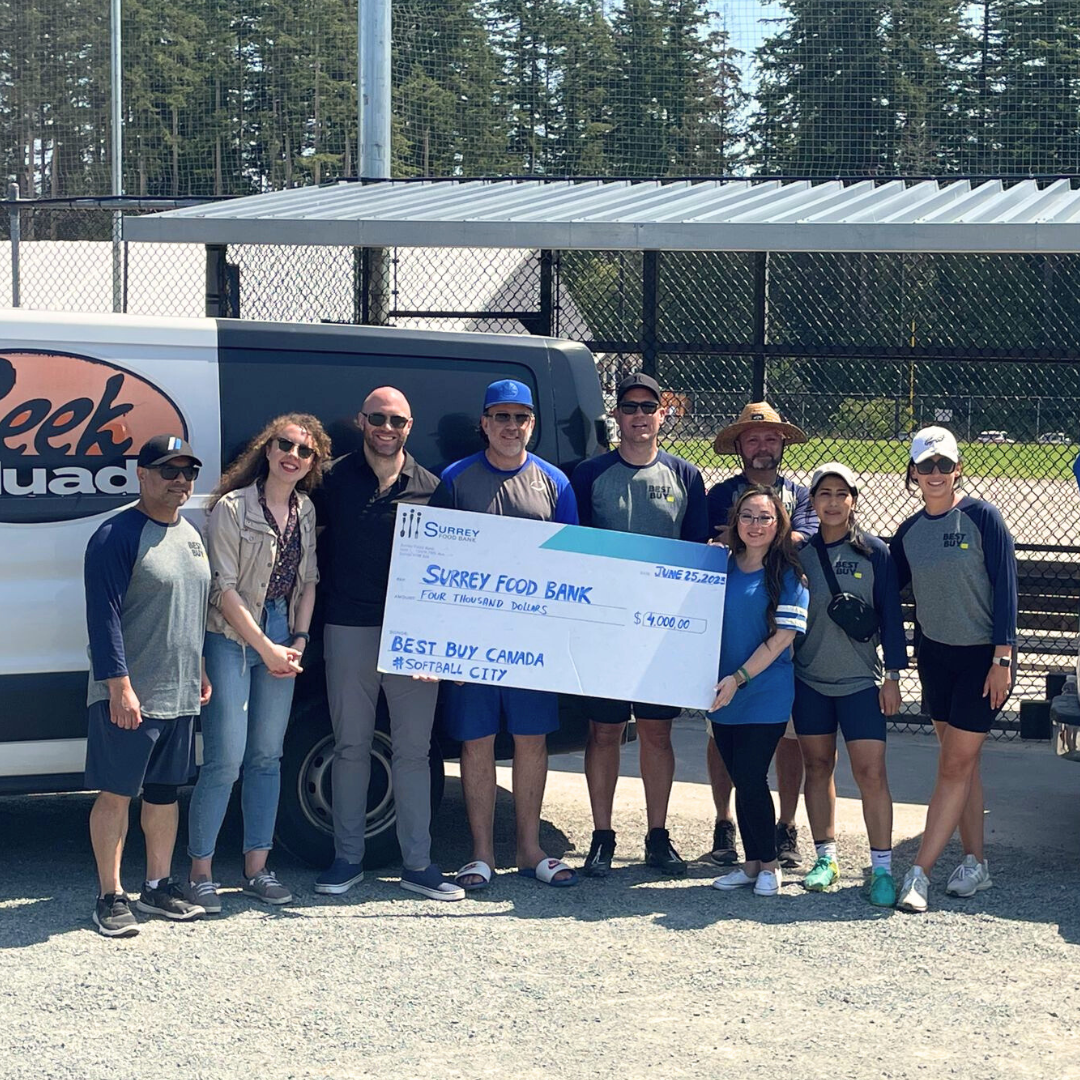How to Identify Shoplifting & Organized Retail Crime
Shoplifting and organized retail crime (ORC) are significant issues that Canadian retailers across the country are struggling with. Loss prevention security guards are trained to look for signs and giveaways while monitoring customers, watching store entrances, and patrolling the store floor. Based on the extensive experience of our retail security team, this article covers our top tips for spotting retail theft in action.
Key Takeaways:
-
Retail theft costs Canadian businesses $9 billion annually, with organized retail crime (ORC) alone costing $5 billion.
-
Shoplifting can be identified by customers taking multiple items from shelves, making direct eye contact with CCTV cameras, and wearing bulky clothing used to hide items.
-
ORC can be identified by customers entering stores in groups, distracting staff, carrying large bags or backpacks, and lingering in certain areas of the store.

How Retail Theft Affects Businesses in Canada
When a retailer experiences repeated, ongoing theft, their bottom line, customer experience, staff morale, and brand reputation are negatively impacted. Retailers across Canada are looking for solutions to the growing retail theft problem affecting thousands of businesses nationwide.
The RCC has recently reported that shrinkage in Canada now accounts for $9 billion, or 1.5% of all sales. This isn’t a problem that affects only big-box businesses, either. A report by the Canadian Federation of Independent Business found that the percentage of Canadian small businesses directly affected by crime and safety issues jumped from 24% in 2023 to 45% in 2024. Moreover, the Toronto Police have estimated that Organized Retail Crime (ORC) costs businesses $5 billion annually.
As retailers plan security strategies, preventing shoplifting and ORC should be a top priority for loss prevention.
How Loss Prevention Retail Security Teams Help Reduce Theft and Shrinkage
The most effective way to prevent theft in stores is with on-site security guards. Guards and undercover loss prevention operatives (LPOs) monitor shoppers, watching for suspicious behaviour and responding to incidents as they arise.
Curious to learn more about LPOs? Read our previous blog, What Are the Duties of a Loss Prevention Security Guard?.

How to Identify Shoplifting in Progress
Shoplifters are typically covert in committing thefts. However, security professionals are trained to watch for suspicious behaviour, such as grabbing items, making frequent eye contact with CCTV cameras, and wearing bulky clothing with pockets, all of which may indicate an individual is shoplifting or intends to shoplift. Here are the details:
1. Grabbing Multiple Items
Security guards are on the lookout for unusual behaviour when customers select products and remove them from shelves. Shoplifters often head straight to their target aisle to steal goods, without regard for how many items they’re taking. Amir Anvarizadeh, National Training & Development Manager at Blackbird Security, shares, “Without attention to the number of products, the subject conceals multiple items in their bag.”
As using personal shopping bags instead of store carts or baskets is often against store rules, any person placing unpurchased items inside a personal bag should be calmly, professionally, and immediately informed of the rules.
2. Direct Eye Contact With CCTV Cameras
Another key suspicious behaviour is a customer looking directly at CCTV cameras. Amir says, “Multiple times you’ll see the subject, for example, grabbing the product or selecting the product, looking at the CCTV. He’s worrying that maybe there’s a CCTV operator doing the surveillance duty in that property.”
Depending on the store, there may not be a dedicated security guard on duty monitoring live CCTV footage. However, this is not something shoplifters are aware of, which can be helpful for security guards in identifying subjects of interest.
3. Bulky Clothing With Pockets
Along with behaviour, another key consideration for retail security guards is clothing. Shoplifters sometimes wear jackets with multiple pockets to conceal stolen goods. Amir notes, “You’re going to see if the subject wanted to make himself not visible to the security professional or not visible to the CCTV operator.” Shoplifters will wear garments that conceal their faces and build, such as face coverings, hoods, long sleeves, and puffer jackets.
Since winter months can last well into the year, especially in colder climates like Toronto, legitimate customers often wear bulky winter gear in stores, which makes spotting shoplifters more difficult. Security guards must lean on their professional knowledge and training to identify other key ORC indicators.
Here’s Amir with more details about shoplifting:
How to Identify Organized Retail Crime Before it Happens
Unlike shoplifting, ORC is significantly more dangerous and difficult to address, as incidents of ORC often become violent and can take place in just minutes. As a result, store staff should be trained to never intervene directly in an ORC theft. Instead, they should dial 911 immediately, keep customers at a safe distance, and allow store security guards to handle the situation.
That said, here are the top signs retail security guards watch for that may indicate an ORC incident is about to take place:
1. Entering in Groups
ORC groups often enter a store together before splitting up. This is so that ORC groups can target multiple areas of a store at once, creating confusion and chaos. Typically, members of an ORC group will know exactly which section to steal from and where it’s located in the store. Group members will head directly to their assigned areas to complete grab-and-go thefts as quickly as possible.
2. Distraction Tactics
Sometimes, a decoy thief will engage staff in conversation to distract them and buy accomplices additional time to steal from the store. Guards and LPOs will closely monitor the store while these conversations are taking place, staying alert for theft that may occur while staff are talking.
3. Large Bags and Backpacks
ORC groups often use large bags and backpacks to store stolen merchandise. Guards will closely watch and monitor groups and individuals entering with these items.
4. Lingering in Certain Areas
ORC groups often conduct reconnaissance in stores before the actual theft. These individuals will walk around the store and may linger in certain areas, such as electronics or jewelry sections, watching staff movement and actions. Undercover LPOs will discreetly inform a staff member of the individual’s behaviour so it can be addressed directly. Addressing a thief directly can sometimes be enough to deter an ORC operation entirely, as thieves are less likely to steal from places that can recognize them.

What Happens When a Theft is Caught in Action?
When a retail security guard or LPO observes evidence of shoplifting, such as finding unpaid merchandise in bags or in the subject’s pockets, they will escort the shoplifter to the back room. The security guard will record the shoplifter’s name, write a comprehensive report on the incident, and contact management and law enforcement if necessary.
What about large-scale ORC crimes? Read our blog post, Retail Security: Spotting and Preventing Shoplifters at Arc'teryx, to learn how a Blackbird Security guard prevented an ORC theft at an Arc’teryx in Coquitlam, BC.
Partner with Canada’s Best Retail Security Professionals
While these tips can help identify subjects of interest, security guards should remain alert for individuals who don’t meet these criteria. “Ultimately, anyone can come into the store, and anyone can come into theft,” says Amir.
Partnering with a professional security team is the best way to reduce inventory shrinkage, shoplifting, and ORC. Our team of highly-trained security guards and loss prevention operatives at Blackbird Security is here to help. We provide retail security coverage to a wide variety of businesses across Canada, including H&M, Sephora, Best Buy, MEC, and many more.
Contact us to find out how we can secure your retail store or explore our full suite of retail security services.








